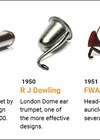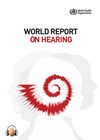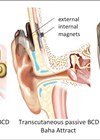We all know the principles of CROS aids and the potential benefits they provide to patients, but did you know they were invented many years before they were officially described in literature? In this engaging article, Neil Bauman explains how CROS hearing aids accidentally started out, concealed within spectacles!
The title of this article seems to be an oxymoron, but this strange event really did occur in the history of hearing aids. Let me explain.
The concept of a CROS (contralateral routing of sound or signal) hearing aid is simple: route the sound coming from the ‘deaf’ or worse hearing ear to the ‘good’ or better hearing ear. This allows people that are deaf or hard of hearing in one ear to better hear sounds from their ‘deaf’ side yet, at the same time, by wearing an open earmould or an earmould with a large vent, to not obstruct the normal sounds coming from the hearing side.
Back in 1960, EP Fowler suggested that “in cases of monaural total hearing loss… a microphone at the bad ear side be fitted with a hearing aid receiver-earmould at the good ear [1]”. However, credit for the first published report on a successful across-the-head fitting goes to Associate Professor of Audiology Earl Harford, PhD, and Audiologist Joseph Barry in their 1965 paper, ‘A Rehabilitative Approach to the Problem of Unilateral Hearing Impairment: The Contralateral Routing of Signals (CROS)’ [2].
Here’s where it gets a bit weird. You see, the truth is that CROS hearing aids had already been in use for 10 years by this time without anyone even realising it! This was made possible by the invention of the transistor and its first use in hearing aids, beginning in December 1952. From that time on, hearing aids rapidly shrank in size. This was because transistors, even the early ones, were still much smaller than the miniature vacuum tubes they replaced. In addition, eliminating vacuum tubes also eliminated the large ‘B’ battery that these vacuum tubes required to ‘run’. The result was that just two years after the first hearing aid containing a transistor came out — the body-worn Sonotone Model 1010 — hearing aids had shrunk so much that the electronic components could now be hidden inside the temple pieces of eyeglasses.
However, the components were still too large to all fit into just one temple piece, so the manufacturers put some components in each temple piece. The four biggest components were the microphone, volume control, receiver and battery. As a result, manufacturers put the microphone, volume control and electronics in one temple piece and the receiver and battery in the other. This arrangement had a big advantage; it totally eliminated feedback as the microphone and receiver were separated by 7” or 8” (18-20cm) on the opposite sides of the head. However, by using this arrangement, the result was essentially a CROS aid; the sound was picked up from one side of the head and delivered to the opposite ear.
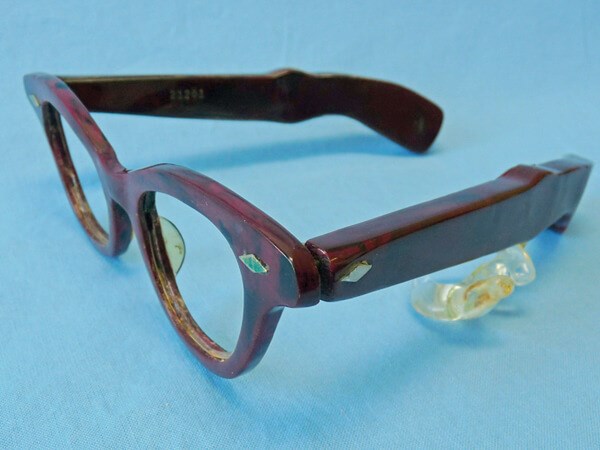
Figure 1. Otarion Model L10 ‘Listener’ eyeglass hearing aid — the world’s first transistorised eyeglass
hearing aid. Note the thick, heavy temple pieces. Both were needed for this hearing aid to work.
Otarion Electronics Inc of Chicago, IL, had the honour of manufacturing the first eyeglass hearing aid using transistors. Their Model L10 ‘Listener’ (Figure 1), came out on 9 December 1954 and went on sale in January 1955. Thus, it had the distinction of being the first CROS aid, a decade before the concept was supposedly invented. These new eyeglass hearing aids quickly became popular and, by 1961, no less than 33 different hearing aid manufacturers had come out with their own versions of eyeglass hearing aids.
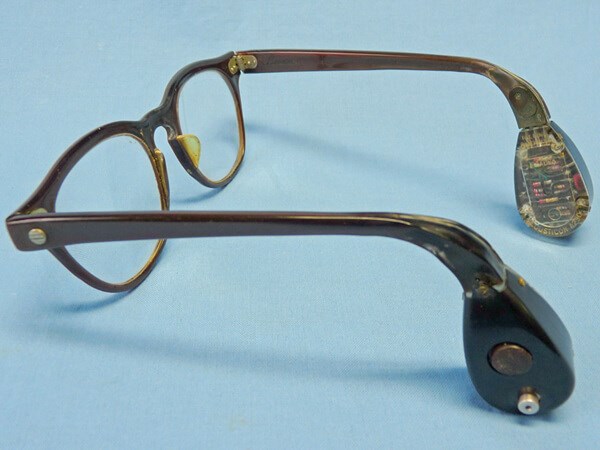
Figure 2. The Acousticon Model A-230 eyeglass hearing aid showing how the
electronics were all contained in the tips of the temple pieces in this model.
Interestingly enough, there were two basic styles used in these early CROS eyeglass hearing aids. The first style had large, heavy-looking temple pieces with the electronics housed throughout their length. An example of this style was the Otarion L10 ‘Listener’ (Figure 1). The second style had more or less regular-looking temple pieces with the hearing aid electronics all housed in the temple piece tips behind the ear. Thus, from the front and side, these hearing aid eyeglasses looked ‘normal’, and the hearing aid part was generally invisible, buried in the hair. An example of this style was Acousticon’s first eyeglass hearing aid, their Model A-230 that came out in 1955 (Figure 2). As you can see, instead of having the electronics spread through the length of the temple pieces, they gathered them all into two enormous (by today’s standards) behind-the-ear tips of the temple pieces. The microphone, electronics and volume control were housed in the right temple piece, while the battery and receiver were housed in the left one.
One problem the engineers had to overcome was how to send the sound signals and power from one temple piece to the other. Their solution was to run two wires from the frame end of the temple piece across the frame and nose bridge to the opposite temple piece. To do this, they used one of two methods. The simplest way was to design the frames with a groove — typically across the top of the lenses and the inside of the bridge to the other side — but the wires would be ‘loose’ at the hinge. This was the weak point with this arrangement: opening and closing the glasses each day could cause the wires to break at the hinge.
A more elegant solution was to make the wires into three sections, one for each temple piece and one for the eyeglass frames. To make contact with each other at the hinges, they used an ingenious arrangement of two pins and two plates. When the glasses were folded, the pins and plates didn’t touch each other, so folding the glasses automatically turned the hearing aid off. When you opened the glasses to wear them again, the pins touched the plates and turned the hearing aid on.
One drawback of needing both temple pieces is that you could not have a binaural fitting. This didn’t seem to be too much of a problem in the mid-1950s as they seldom used binaural fittings at that time. They figured that hearing in one ear was good enough (they know better now). However, it didn’t take long for components to shrink further and, by October 1956, both Acousticon and Beltone had come out with eyeglass hearing aids that had all the components in just one temple piece. Both the Acousticon Model A-235 and the Beltone ‘Hear-N-See’ still had the heavy-looking temple pieces; it’s just that all the components were contained in one temple piece. The opposite temple piece could be a separate hearing aid, or it could be a matching ‘dummy’. Now people could wear binaural eyeglass hearing aids.
Thus, the demise of the early eyeglass CROS hearing aids began within two years of their first coming out. By 1958, almost all eyeglass hearing aids only used one temple piece, although bone conduction eyeglass CROS hearing aids requiring both temple pieces stuck around a bit longer, until 1961 or so.
So that is how CROS hearing aids existed a decade before CROS aids were even invented. As Paul Harvey used to say, “now you know the rest of the story”.
References
1. Berger KW. The Hearing Aid: Its Operation and Development. 3rd Edition. Michigan, USA; The National Hearing Aid Society; 1984.
2.nHalford E and Barry J. A Rehabilitative Approach to the Problem of Unilateral Hearing Impairment: The Contralateral Routing of Signals (CROS). J Speech Hear Disord 1965;30(2);121-38.



